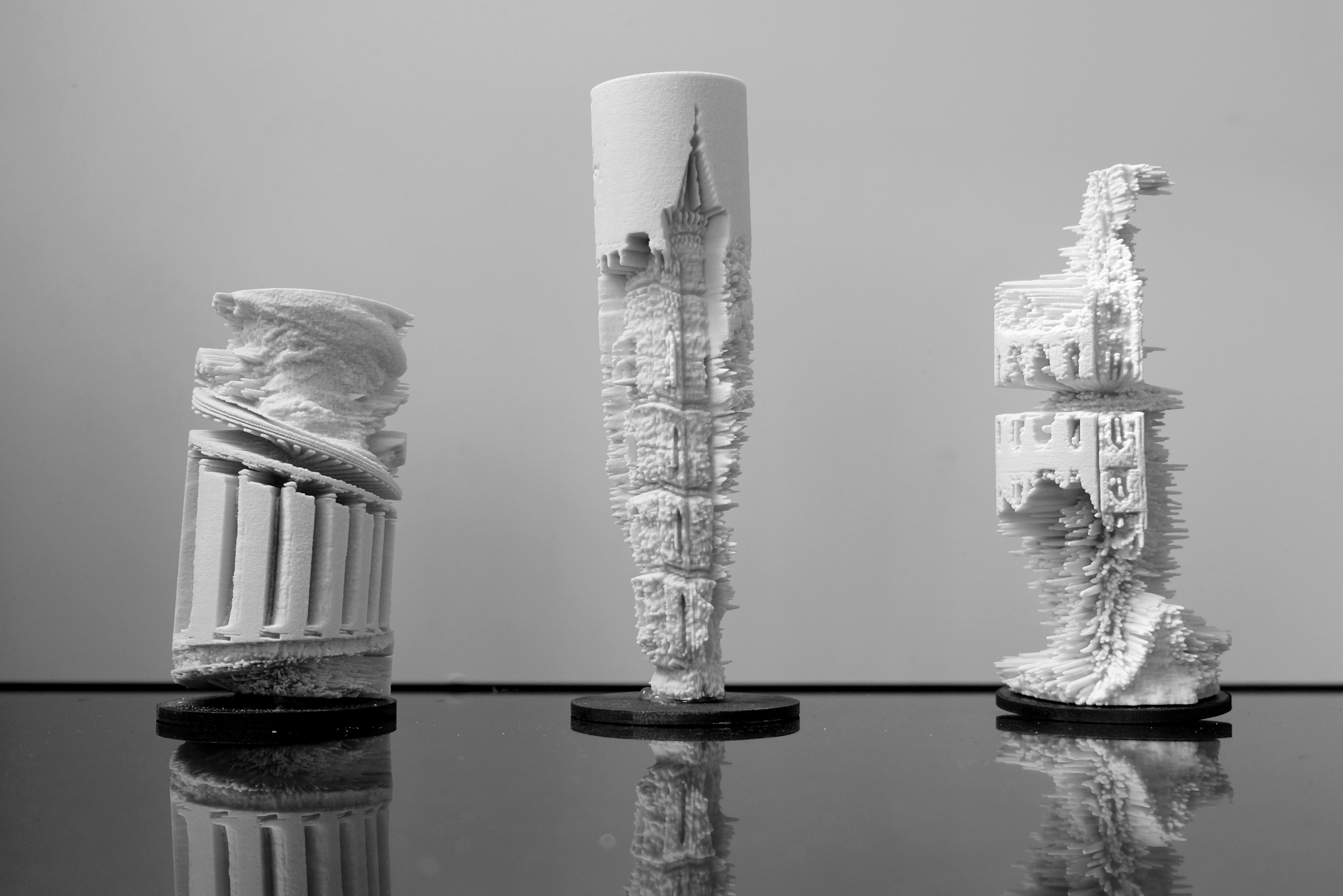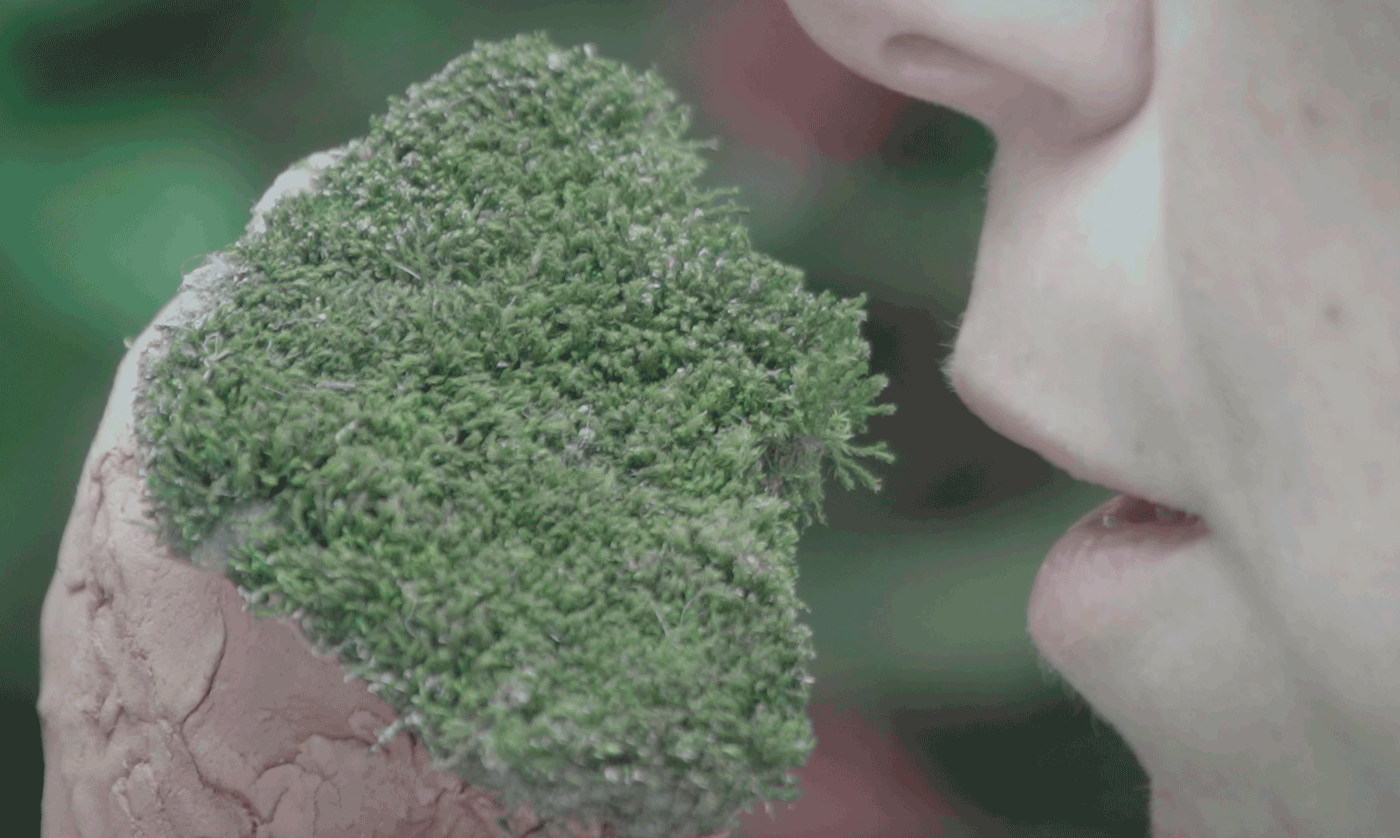Architectures of Polarisation
 I introduced polarity into the colony’s system by selectively controlling the growth rates of strands - Some are allowed to grow taller than others. I projected far red light over half of this moss colony. The exposed half grew longer but also lost its green color
I introduced polarity into the colony’s system by selectively controlling the growth rates of strands - Some are allowed to grow taller than others. I projected far red light over half of this moss colony. The exposed half grew longer but also lost its green color
 Normally, moss's strands grow in a regulated way, keeping a fairly even surface. In my experiments I enhanced a small group of strands by controlling reasources, to fit the competitive capitlist growth model.
Normally, moss's strands grow in a regulated way, keeping a fairly even surface. In my experiments I enhanced a small group of strands by controlling reasources, to fit the competitive capitlist growth model. The Sharing Capillary Infrastructure — Based on a capillary action principle, the prosthetic roots infrastructure benefits the strands that are based in the centre. The periphery's constant drying is the force that pulls more moisture for the centrally located strands.
The Sharing Capillary Infrastructure — Based on a capillary action principle, the prosthetic roots infrastructure benefits the strands that are based in the centre. The periphery's constant drying is the force that pulls more moisture for the centrally located strands.

The Fragmentation Pavilion — The fragmentation pavilion, facing north, is shaped aesthetically to allow a fragment of shadow to most of the moss colony and a full year quality shadow for 10% of the moss strands.

 The sun path and the shade from the pavilion in different hours.
The sun path and the shade from the pavilion in different hours.
 The Financialisation Park and The Ring-fencing Wall — Based on a gravity and water flow, the Park's shape allows those with the deepest foundation and legacy to benefit from the excess water that other, smaller strands do not retain. The Ring-fencing Wall protects the strand from losing moisture to the surrounding.
The Financialisation Park and The Ring-fencing Wall — Based on a gravity and water flow, the Park's shape allows those with the deepest foundation and legacy to benefit from the excess water that other, smaller strands do not retain. The Ring-fencing Wall protects the strand from losing moisture to the surrounding.
Moss is an anti-thesis to the human's neo-capitalistic system and values. It is an uncompetitive, slow and low grower, quite sensitive to environmental changes. The moss's life cycle is not tuned according to hours, days or seasons. Rather, it is synchronized to the availability of resources, water and indirect light. Strands of the same moss colony grow in a regulated way, keeping a soft and fairly even surface.
In this project, I am trying to change the moss colony's behaviour with human-designed interventions, and use the moss as a model for provoking thoughts about neo-capitalistic paradoxes and their possible consequences. This is not about bio-mimicry but rather an aim to expose mechanisms through allegories and to point out the agents that might influence them.
The economy is a very complex and unpredictable system, market behaviour is sometimes compared to physical dynamics. Can we really control complex natural forces? What values do we really want to design for? And which agents should take part in shaping the next version of capitalism (or an alternative for it)?
Data Fossils is a speculative project imagining futuristic archaeology and alien anthropological research. Assuming a site might completely demolish and the only remnant would be digital data from photos, how might a physical restoration look like if a machine is doing an automatic translation from 2D to 3D?
>More
>More
Inflate is an experiential installation provoking against monopolism and dominance of a tiny oligarchy.
>More
>More
“It is the artistic mission to penetrate as far as may be toward that secret ground where primal law feeds growth.”
- Paul Klee>More
niritbin@gmail.com instagram: @niritbin







